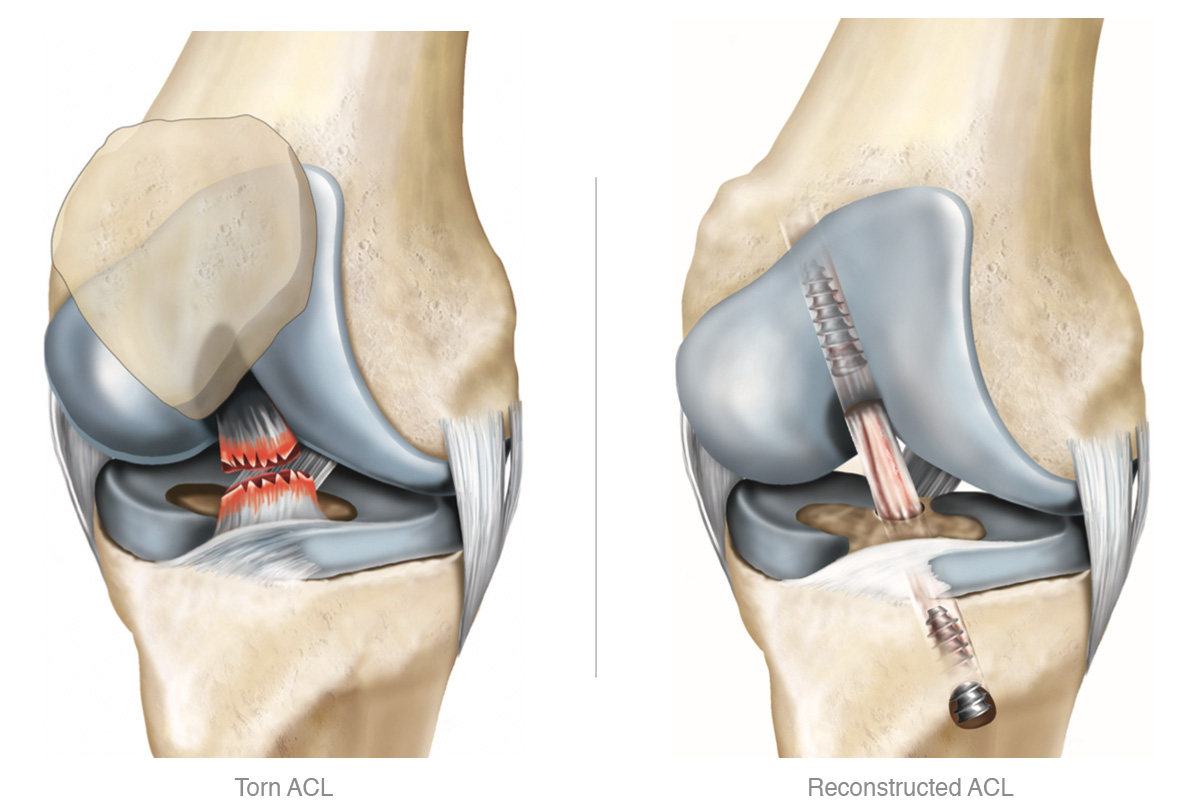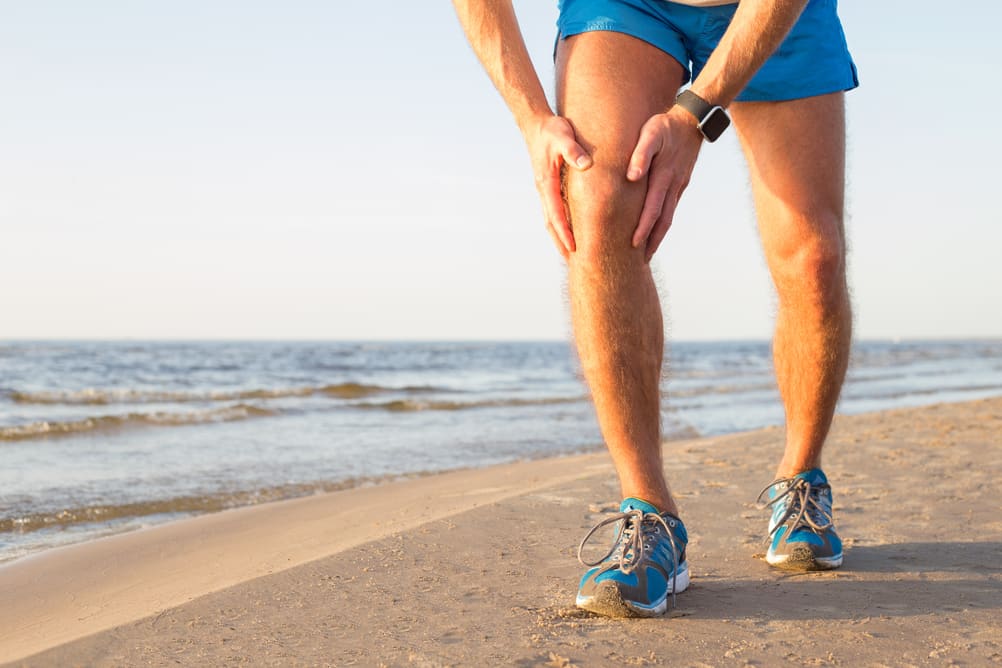Injury to Knee Ligaments – How To Treat Them

Injury to Knee Ligaments – How To Treat Them – Knee injuries are painful and costly for the sufferer. Here’s how to treat them and minimize the damage done. The human body is a marvel of engineering and an ever-changing source of inspiration. Whether you’re talking about how muscles work together to help you run or the intricacy of our nervous system, it’s never been easier to appreciate how complex the human body is. The same can’t be said for our knees, which are made up of very simple parts that are put together in a rather complex manner. Knee injuries are common and costly for the sufferer, but there are steps you can take to limit the damage they cause.
Knee ligaments are important as they hold the knee joint in place. They are also very strong and can sustain a lot of force. When they are torn or strained, they can be quite painful. Fortunately, there are several things that you can do to treat these injuries.
Knowing about your body and what it can do is always good. Your ligament is not one of those parts of your body that we tend to consider, but they are important and must be looked after.
This article is about some common ligament injuries and how to treat them.
There are two main types of ligaments in the knee; the cruciate ligaments and the collateral ligaments.
Main Injury to Ligaments in the Knee
Knowing about your body and what it can do is always good. Your ligament is not one of those parts of your body that we tend to think about, but they are important and must be looked after.
Knee ligaments are important as they hold the knee joint in place. They are also very strong and can sustain a lot of force. When they are torn or strained, they can be quite painful. Fortunately, there are several things that you can do to treat these injuries.
First and foremost, if you injure your knee ligament, you should stop all activities that strain your knee. If you keep going, you will only make matters worse. This means you should avoid jogging, climbing stairs, running up and down hills, and doing any other activity that puts pressure on your knee.
After you have rested and recovered, the next thing you should do is ice your knee. Ice packs are a great way to help reduce swelling and inflammation. You can use a bag of frozen peas or buy an ice pack and put it on your knee.
When you first start using an ice pack, you should use it for 15 minutes at a time and then take a break for 10 minutes before you use it again. It would help if you repeated this cycle for a total of four to five times per day.
You can also try using a knee brace. Knee braces are useful because they are usually easy to use and can be used for recovery and prevention.
However, you should not wear a knee brace every day. It is better to wear a knee brace for a few days, take it off for a few days, and then put it back on. This is because knee braces usually work by helping your knee ligament heal itself. If you wear it every day, then your knee ligament will not be able to recover fully.
If you tear or strain your knee ligament, you can take several steps to help prevent further damage.
Ligaments Protect the knee
Knee ligaments are important as they hold the knee joint in place. They are also very strong and can sustain a lot of force. When they are torn or strained, they can be quite painful. Fortunately, there are several things that you can do to treat these injuries.
The most common injury to ligaments is a sprained ligament, where the ligament is stretched and can no longer support the joint. This injury is often caused by sudden trauma such as a car accident, falling stairs, or twisting your knee. A knee sprain is usually very painful, and the best thing you can do is to ice it, as this will help reduce the swelling and speed up the healing process.
If you are unlucky enough to have a torn ligament, you must see a doctor as soon as possible. It is essential to have an MRI scan to see how bad the damage is and if you need surgery.
The torn ligament can cause problems with the knee and other joints. If this happens, you should see a specialist for treatment and advice.
Most Common Ligament Injuries
Knee ligaments are important as they hold the knee joint in place. They are also very strong and can sustain a lot of force. When they are torn or strained, they can be quite painful. Fortunately, there are several things that you can do to treat these injuries.
Knee ligaments can tear when a sharp object hits them, when you have a sudden twisting motion, or when you are playing sports. The most common ligament injury is called ACL. It is the anterior cruciate ligament, one of the strongest ligaments in your body. It is located on the front of your knee,e and it is responsible for holding your knee joint together. When this ligament is damaged, you may notice some pain and swelling.
The best way to treat this is to see your doctor and inform them about your injury. Many people do not go to the doctor when injured because they do not know what to do or are afraid of being treated.
However, the best way to treat your knee ligaments is to see your doctor and inform them about your injury. Many people do not go to the doctor when injured because they do not know what to do or are afraid of being treated.
When you have an injury, rest is the best thing to do. It would help if you also iced your knee after you are injured. Ice helps the muscles relax, and it reduces inflammation. Also, make sure to keep the injury as still as possible. If you do not have an ice pack, you can put cold compresses on the affected area.
There are other ways to treat your knee ligaments. One way is to use heat. Heat can loosen up the ligaments and make the pain go away. Another way is to use a knee brace. These braces provide support for your knee and help to prevent further injuries. If you are using these braces, make sure to use them correctly.
Risk Factors for Knee Ligament Injuries
When looking at ligament injuries, you must examine both the soft tissue and the bone. Soft tissue injuries can be complicated, so you should always seek professional help if you damage your ligaments.
A torn knee ligament can be a serious injury, especially to your knee. If you have an injury to the ligament in your knee, you must see a doctor immediately. Knee ligament injuries can be very painful; you must see a professional to fix them properly.
You might have heard that exercise is good for you, and this is true. Exercising is good for you because it can improve your overall health and help you to stay in shape. It would help if you exercised at least twice a week.
It is recommended that you should try to exercise at least two times per week. However, if you are a beginner, you may want to exercise less often. It would help if you aimed to exercise for at least 30 minutes.
If you are a beginner, you should try to exercise for at least 30 minutes. It would help if you also worked on strengthening your muscles. You should make sure that you are working out your arms, your legs, your back, and your core. It would help if you tried to exercise with your family members.
If you are a beginner, you should try to exercise for at least 30 minutes. It would help if you also worked on strengthening your muscles. You should make sure that you are working out your arms, your legs, your back, and your core. It would help if you tried to exercise with your family members.
Talking to your family members about their feelings when exercising is also a good idea. You can try to find out what they think about your workouts. You can ask them whether they are enjoying themselves. You can also ask them whether they want to join you for an activity.
Talking to your family members is a good idea. They can help you to motivate yourself to continue exercising. You can encourage your family members to exercise as well.
Frequently Asked Questions(FAQs)
Q: Why did you need surgery?
A: I tore my left knee’s ACL, meniscus, and other ligaments. I didn’t realize I had pulled the meniscus until after the surgery.
Q: How long were you out for?
A: It was over five months. The doctors told me I might not be able to walk properly again. Luckily, I was able to walk pretty well after the surgery.
Q: How much did you miss working out while you were recovering?
A: My knee was sore, so it hurt to exercise. When I started walking again, I had to build up slowly. After a few months, I felt comfortable enough to start running.
Q: What advice would you give someone about having surgery on their knee?
A: It’s important to remember that recovery is an ongoing process. I’ve undergone many exercises to keep myself in shape and help my knee heal properly. If you want to be ready to play sports again, you should be doing the exercises your doctor recommends.
Myths About injury
1. Injury to the knee ligaments is an uncommon condition.
2. Injury to the knee ligaments only occurs in people over 30.
3. Sports are The most common cause of injury to the anterior cruciate ligament (ACL).
4. Sports are The most common cause of injury to the posterior cruciate ligament (PCL).
5. Physical examination, MRI, and arthroscopy can diagnose an ACL tear.
6. physical examination, MRI, and arthroscopy can diagnose a lone PCL tear.
7. An ACL tear may result in an isolated PCL tear.
Conclusion
Knee ligaments are tough little guys and gals, and they do a great job of protecting the knee joint. But sometimes, they can become damaged.
When this happens, the ligaments have to be repaired. This process is called surgical repair. It’s done in two steps: First, the torn ends of the ligament are stitched back together. Then, the ligament is re-injured to make it stronger.
During the second step, surgical fixation, the injured ligament is tied down with sutures. After that, the knee is immobilized. This type of surgery usually takes place in an operating room under anesthesia. Sometimes, it can take place in a hospital or clinic.
Surgical fixation is tying down the ligament to make it stronger. This process is often used to repair torn ACL (anterior cruciate ligament) and MCL (medial collateral ligament).












